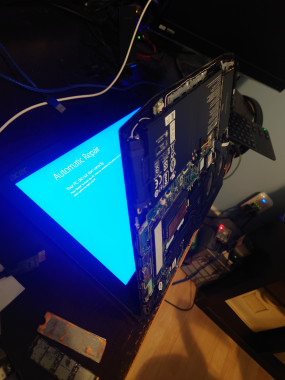Cloned Windows 10 drive keeps taking me to automatic repair after using clonezilla
Ok so I was trying to clone 512gb nvme ssd to my new 2tb drive with clonezilla and it keeps taking me to automatic repair. I unplugged the original drive and replaced it with the new one before booting. I ran a chkdsk both times before cloning.
The first time I cloned the drive i used these settings:
device to device beginer disk to local disk Chose my source and target Skip disk checking -k0 use source partition table
Then I tried these settings:
device to device expert disk to local disk Chose my source and target Left everything as default -k1 Create partition table proportionally
I also plan on partitioning half of the drive so that I can dual boot linux as Window 10 is reaching eol and I don’t want anything to do with Windows 11 and I still need Windows for gaming.
